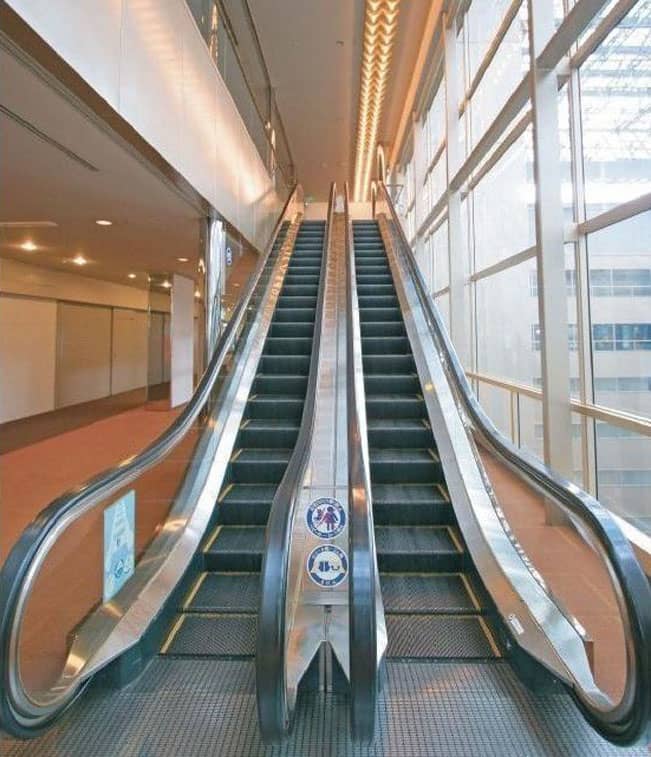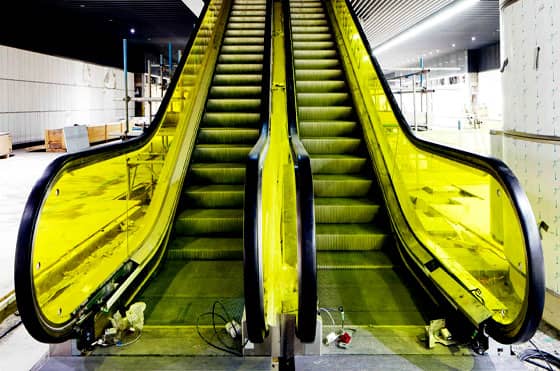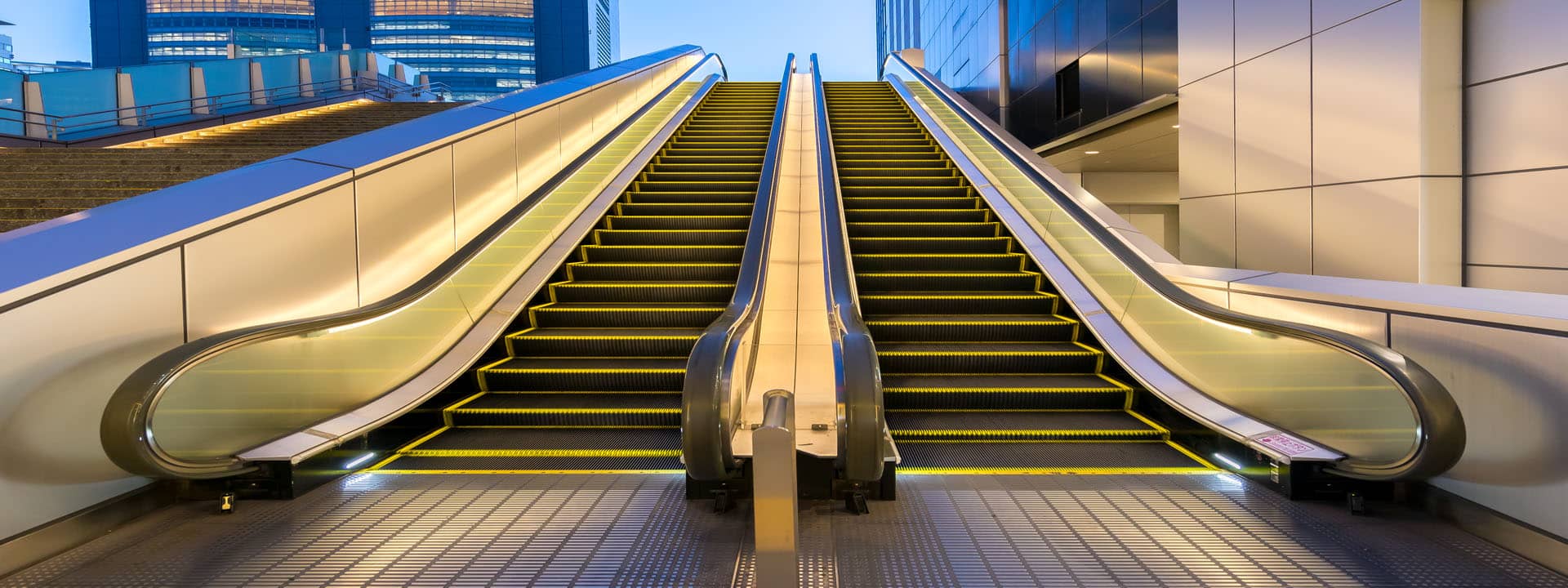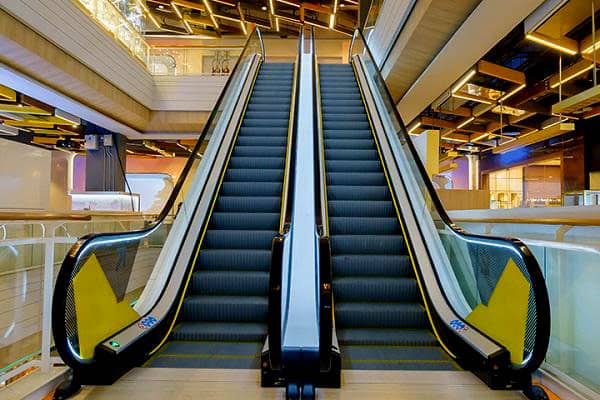ESCALATOR OF KMS ENGINEERING
An escalator is a moving staircase that carries people between floors of a building or structure. It consists of a motor-driven chain of individually linked steps on a track that cycle on a pair of tracks that keep them horizontal.
It is often used around the world in places where lifts would be impractical, or they can be used in conjunction with them. Principal areas of usage include department stores, shopping malls, airports, transit systems (railway/railroad stations), convention centers, hotels, arenas, stadiums, and public buildings.
Rewrite the paragraph with active voice, transition word and maximum 12 words should be contains in each sentence

Design, components, and operation
It’s typically rise at an angle of about 30 degrees from the ground. They move at 0.3–0.6 meters per second (1–2 ft/s) – like moving walkways, and may traverse vertical distances over 18 meters (60 ft). It has single-piece aluminum or stainless steel steps that move on a system of tracks in a continuous loop.
Different types in the following way
- Parallel (up and down adjacent or nearby, often seen in perpendicular areas, metro stations, and multilevel movie theaters)
- Crisscross (direction oriented adjacent but perpendicular, frequently used in department stores or shopping centers).
Design and layout considerations Of An Escalator
Design factors include physical requirements, location, traffic patterns, safety considerations, and aesthetics. The length and pitch of the escalator depend on the distance it needs to span, while designers must consider crucial factors like infrastructure support and power capabilities. Separation of upward and downward traffic, as well as load/unload areas, also play vital roles.
Designers must anticipate temporal traffic patterns and ensure visibility and accessibility of the escalator to users. Projected traffic volumes need careful consideration; for instance, a single-width escalator moving at approximately 0.5 meters per second can handle around 2000 people per hour in single-file conditions.
The escalator’s carrying capacity system is typically tailored to meet peak traffic demands. For example, escalators at transit stations must accommodate the peak flow of passengers discharged from trains, preventing overcrowding at entrances.


Components Landing platforms of Escalator
Landing platforms are the two platforms (at the two ends) that house the curved sections of the tracks, as well as the gears and motors that drive the stairs. The top platform usually contains the motor assembly and the main drive gear, while the bottom holds the returned gear. These sections also anchor the ends of this truss. Each platform also has a floor and a comb plate. The interlocking cleats help to minimize the gap between the stairs and the landing, preventing objects or persons from becoming caught in them.


